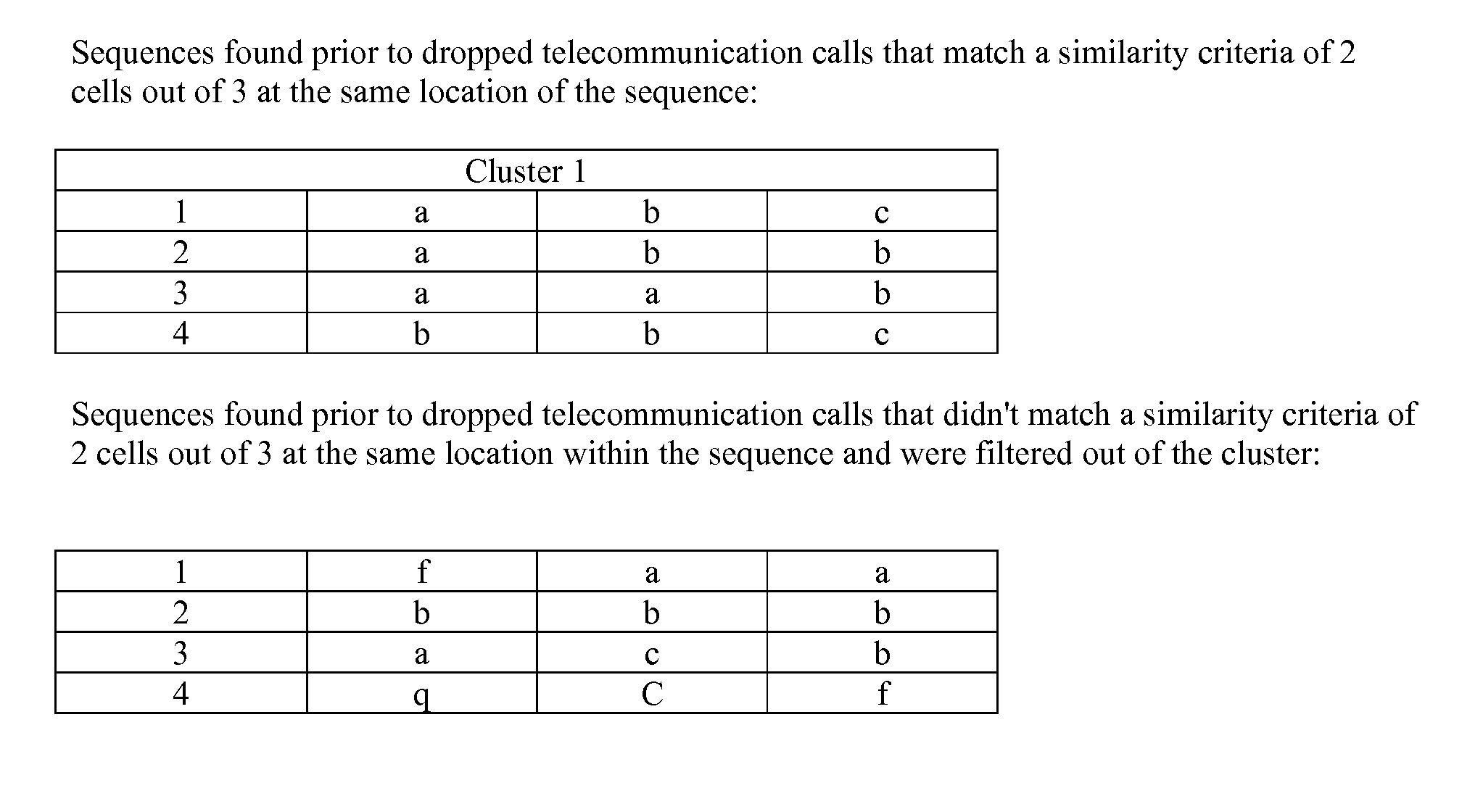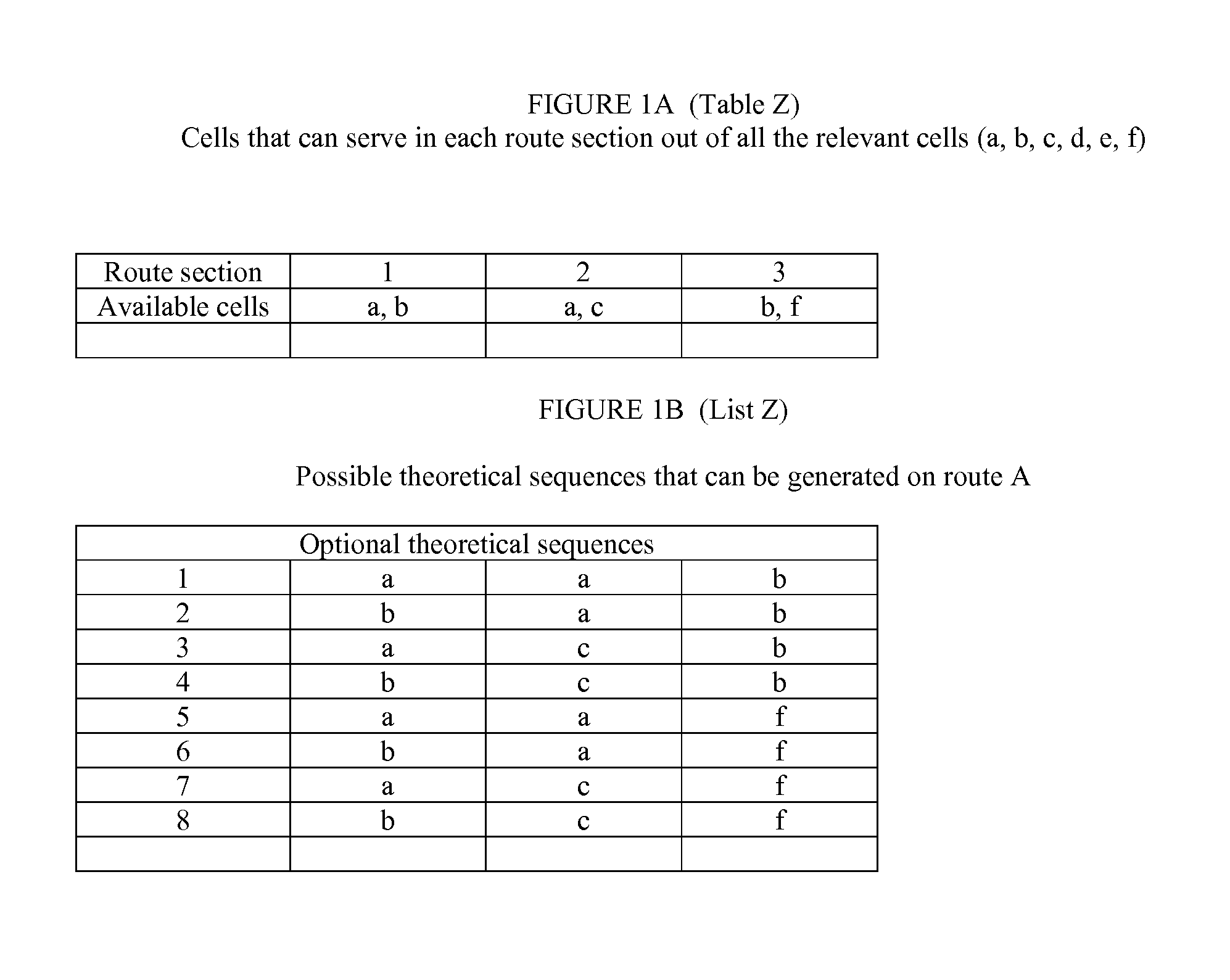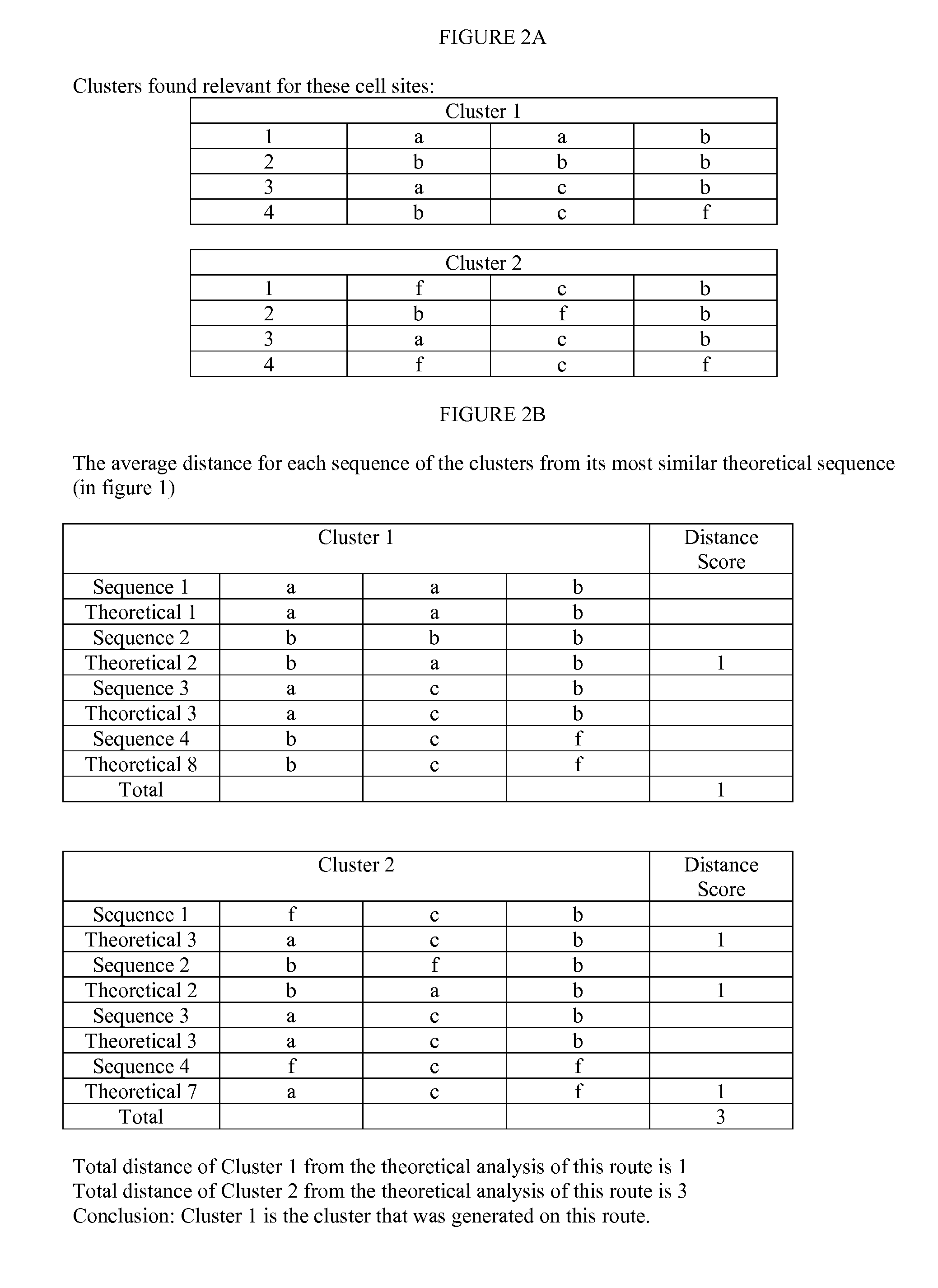Method for detecting events on cellular comm. network
- Summary
- Abstract
- Description
- Claims
- Application Information
AI Technical Summary
Problems solved by technology
Method used
Image
Examples
Embodiment Construction
[0022]Detecting Related Events on the Cellular Comm. Network
[0023]An example of detecting related or repeating events is disclosed. A matching stage can be the first stage of the method. At this stage a sequences database is created, containing sequences of events extracted from the control channel of the cellular comm. network, (some times called also “signaling data”) which has a relevant characteristic. Such characteristic can be for example the appearance of dropped telecommunication call at the end of a sequence, the appearance of call quality problem (such as a handover for which the reported cause, specified within the message, is uplink or downlink quality) during the sequence, the appearance of specific cell or cells relevant for a required area, bandwidth problem or any other specific event of interest. Such events may include cell / sector ID, radio frequencies (which can be correlated with Cell / section), location area, service area etc. Additional information, for example ...
PUM
 Login to View More
Login to View More Abstract
Description
Claims
Application Information
 Login to View More
Login to View More - R&D
- Intellectual Property
- Life Sciences
- Materials
- Tech Scout
- Unparalleled Data Quality
- Higher Quality Content
- 60% Fewer Hallucinations
Browse by: Latest US Patents, China's latest patents, Technical Efficacy Thesaurus, Application Domain, Technology Topic, Popular Technical Reports.
© 2025 PatSnap. All rights reserved.Legal|Privacy policy|Modern Slavery Act Transparency Statement|Sitemap|About US| Contact US: help@patsnap.com



